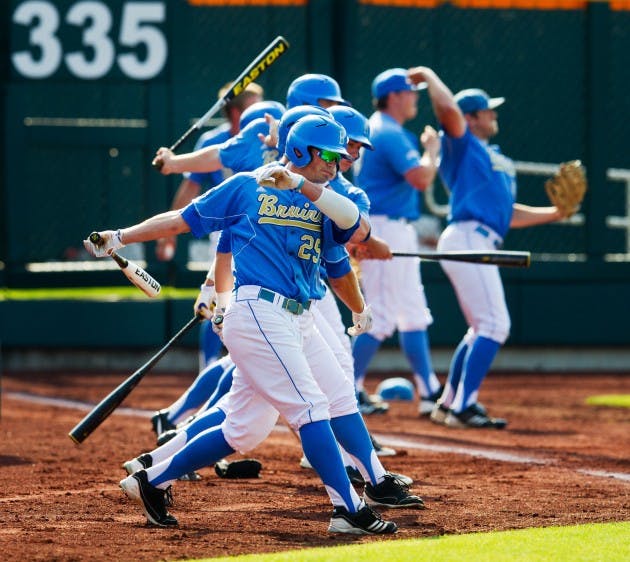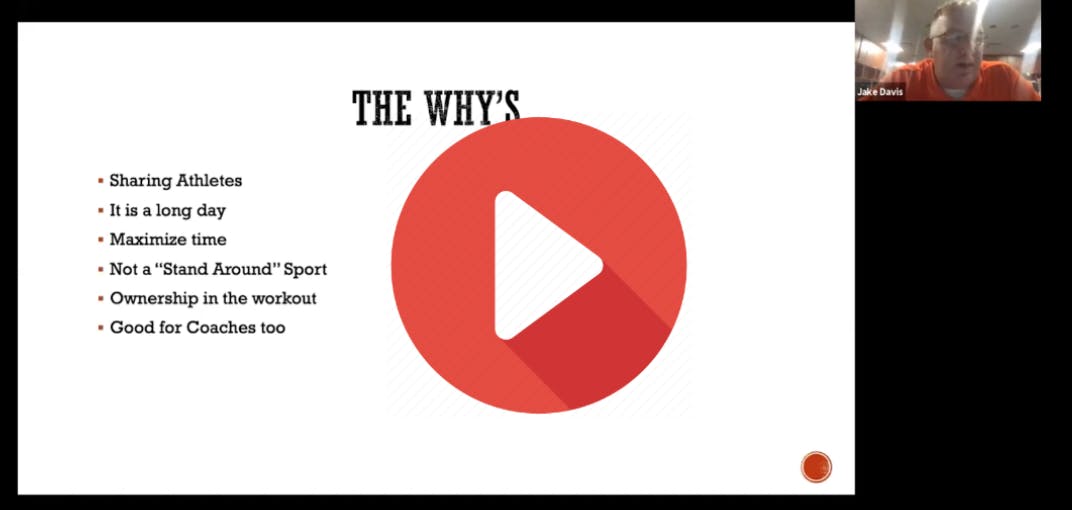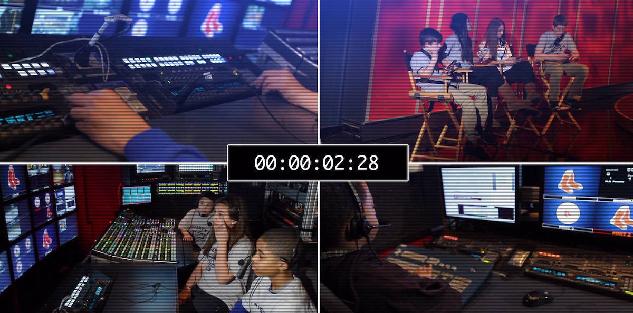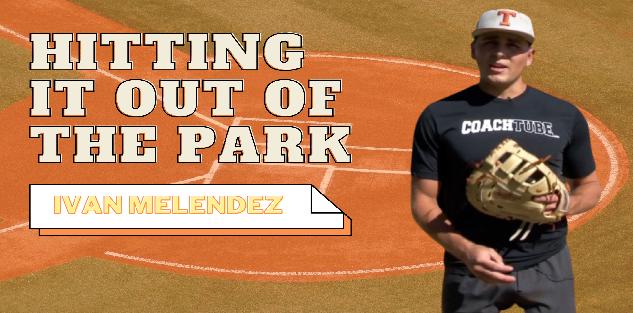Featured courses
- Understanding The Shift by Brandon Ogle
- Two Drills to Improve Outfield Movement and Communication by Grant Young
- The Ultimate Resource For Coaching Youth Baseball by Jackson Chlebowy
- Become a Master at Bunting by Brandon Ogle
- 5 Reasons Why There Is More To Good Base Running Than Just Speed by Brandon Ogle
- Three Injury-Prevention Tips For Your Offseason Pitching Program by Grant Young
- How to Teach Hitting to the Next Generation by Grant Young
- Developing Defensive-Minded Baseball Catchers by Grant Young
- 3 Baserunning Tips to Score More Runs in Baseball by Grant Young
- 5 Outfield Drills to Work on in Season by Alec Burris
- Keys For Scoring More With Runners on First and Third Base by Grant Young
- How to Develop Your Game to Become a Five-Tool Player by Brandon Ogle
- 3 Coaches Share the Keys to Running Baseball Practice the Right Way by Grant Young
- Four Drills to Sharpen a Baseball Hitter’s Vision at the Plate by Grant Young
- Four Quotes to Hit Better With Two-Strikes by Grant Young
- Four of Former MLB Pitcher Juan Nieves’ Movement-Based Pitching Drills by Grant Young
- Two Tips For Developing an Elite Baseball Bullpen by Grant Young
- Overcoming the Four Challenges of Indoor Baseball Practices Because of Weather by Grant Young
- Three Tips to Make Your Baseball Team Mentally Tougher by Grant Young
- Three Priceless Philosophies to Motivate Your Baseball Team by Grant Young
- Three Offseason Baseball Drills to Simulate Competition by Grant Young
- Three Baseball Offseason Strength and Conditioning Essentials by Grant Young
- Important Ways to Improve Your Baseball Team’s Baserunning by Grant Young
- Three Ways to Perfect Hitting Mechanics From an MLB Icon by Grant Young
- Catchers can influence pitchers...for bad or good by Drew Johnson
- Throwing Strikes and Playing Good Defense Equals Wins by Jose Ortiz
- Legendary Indiana Head Baseball Coach Bob Morgan’s Offensive Theory by Grant Young
- Tennessee Head Baseball Coach Tony Vitello on How to Practice Baserunning by Grant Young
- Three Great T-Ball Drills For Youth Baseball Players by Grant Young
- How to Manage a Baseball Pitching Staff by Grant Young
- Three Uncommon Tips to Become a Better Hitter by Grant Young
- How a Baseball Coach Can Develop Strike Throwers by Grant Young
- Drills to Develop Elite Baseball Outfielders by Grant Young
- Baseball Training Exercises to Strengthen Arm and Bat Speed by Grant Young
- How to Use Bunting to Score More Runs by Grant Young
- How To Build An Elite Baseball Infielder by Grant Young
- Three Drills to Improve Your Baseball Team's Infield Play by Grant Young
- Three Keys to Curating a Pitching Staff’s Success by Grant Young
- 3 Techniques to Develop a Baseball Player’s Hitting Approach by Grant Young
- How to Cultivate Confidence Within Your Pitchers by Grant Young
- 5 Every Day Drills To Help You Become A Better Catcher by tyler Linderman
- How to Throw A Curveball by Brandon Ogle
- How to Assemble a Lock-Down Bullpen by Brandon Ogle
- How to Throw a Sinker by Brandon Ogle
- How to be a Smart Baserunner by Brandon Ogle
- Improving a player's slugging average by Phillip Woolgar
- The 8 Fundamentals of Pitching by Drew Johnson
- How to Throw a Deceiving Changeup by Brandon Ogle
- Step Up Your Outfield Defense With These Three Drills by Jose Ortiz
- 8 Baseball Drills Every Player Should Practice by Drew Johnson
- How To Become An Elite Defensive Outfielder by Tyler Linderman
- 5 Tips For Crushing A Curveball by Johnny Grassi
- LEGENDS FOR YOUTH INCLUSION BASEBALL CLINIC by Phil
- Fourteen Ways To Turn A .300 Hitter Into A .210 Hitter by Jay P. Granat, Ph.D.
- How To Become The Ideal Leadoff Man by Brandon Ogle

3 Coaches Share the Keys to Running Baseball Practice the Right Way
- By Grant Young
Creating efficient, effective baseball practice plans can be more difficult than it sounds.
There are many moving parts, and because all players need something specific and specialized to what they’re working to improve, coaches can easily feel overwhelmed with ensuring that their program is making the most of their practice time.
Thankfully, conducting a productive baseball practice can be easier than it sounds. The way to do so is by establishing a practice atmosphere where the players are excited to be there, and are eager to hone their skills and perform well on the field. And the best way to cultivate this type of practice environment boils down to one word: competition.
Jake Davis, Rich Maloney, and Craig Rainey are three high-level baseball coaches who have successfully created competitive practice environments, and are willing to share their methods to help baseball coaches run practice that prioritize winning.
Jake Davis - 'High Intensity Practice: Why and How'

Before becoming head coach at Texas’ Ponder High School, Jake Davis created a dynasty during his seven-season tenure at Celina High School. His ball clubs were constantly winning their district championship, and proved to be an extremely difficult team to beat both at home and on the field.
Coach Davis says this success boils down to the competitive, high intensity practices that he runs on a daily basis.
When explaining why he prefers to run his practices this way, Coach Davis has ‘The Why’s’:
Sharing Athletes - Many high school baseball players also partake in other high school sports. And that doesn’t include actually going to school, doing homework, and maintaining a social life outside of the class. Since their time is stretched in so many different ways, these athletes perform best at a high intensity practice that doesn’t keep them for longer than necessary.
It is a long day - Given everything that’s already on a high school athlete’s plate, it’s hard for them to focus on anything for longer than a few minutes. By the time they get to baseball practice, they’ve already had a very long day. A high intensity practice gets them engaged and eager to compete.
Maximize Time - Coach Davis believes kids will get more out of their practices by being fully present and active for a shorter amount of time, compared to standing around for two hours and feeling like they aren’t being productive or improving at the field.
Not a “Stand Around” Sport - Since his players won’t be at practice for a long time, Coach Davis wants his players to be active and doing something the entire time they’re at the field. Keeping them moving means they have no choice but to be present with the task at hand.
Ownership in the workout - Coach Davis delegates some practice tasks (such as stretching) to his seniors. This gives them the chance to be leaders, and makes them accountable for the focus level and intensity of each practice.
Good for coaches too - Coaches have families they want to get to, and other lives off of the baseball field. Therefore, running a short but high intensity practice is beneficial for everyone.
Coach Davis concludes by saying that his practice averages between 1 hour and 15 minutes to 1 hour and 20 minutes per day.
2. Rich Maloney - 'Infield Skills and Drills'
Rich Maloney has been the head coach of Ball State University since 2013. Since that time, he has turned Ball State into a perennial contender for the MAC Championship, Prior to coaching at Ball State, Coach Maloney served as the University of Michigan’s head coach. In his combined time at Michigan and Ball State, Coach Maloney has had 75 players selected in the MLB Draft. And he knows a thing or two about running an efficient practice.
The main focus that Coach Maloney has when running his infield practices is that his players are working up to a high intensity. It’s important for his players to start their practice sessions off slowly, focusing on the fundamentals, players revert to the fundamentals that they worked on in practice during big game situations.
Yet, because Coach Maloney prefers to utilize basic drills, his players have been practicing some form of these drills since they were little kids. This repetition leads to a tendency for players to lose their focus and go through the motions, which will not help them improve.
Coach Maloney bypasses this by keeping a high energy, high intensity practice environment that ensures his players must remain focused and engaged. By emphasizing repetition, Coach Maloney guarantees that his players will be prepared during the game’s most important moments.
3. Craig Rainey - ‘Making Practice Competitive to Compete in the Big Game’
Craig Rainey has been the head coach of Adrian College’s baseball team for 31 seasons. During his legendary tenure, Coach Rainey has become a perennial contender in the Michigan Intercollegiate Athletic Association (MIAA), including winning eight tournament titles.
A crucial component to Coach Rainey’s success is running his team’s practices as competitively as possible. One way he does this is by keeping score of everything.
Coach Rainey explains that it doesn’t matter how you decide to keep score. All that matters is that whatever currency value you use matters to the players. For example, you could take away a piece of team-issued clothing at the start of season, and make players compete and earn that clothing as the season progresses.
The reasoning for this is that, in a baseball game, the value within outcomes is obvious because it shows up on the scoreboard and in the standings. But in practice, successful performance isn’t always so clear. So Coach Rainey suggests implementing a value system, to make players understand that there are benefits to practicing the right way.
If you utilize any or all of these practice techniques to foster a competitive, high intensity environment to your baseball practices on a daily basis, you can expect success to follow.



